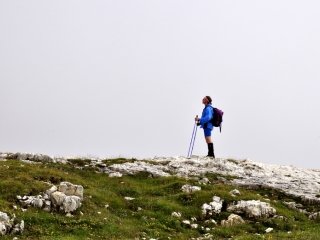 For some outdoorsmen, the trails and even elevated hills are still not high enough. Such individuals tend to think vertically and take on the arduous task of negotiating boulder-ridden mountain passes and even scaling rock faces to reach places most of us will never see. This is what’s known as mountaineering. Today, we’ll take a look at some of the essential gear needed for such an adventure.
For some outdoorsmen, the trails and even elevated hills are still not high enough. Such individuals tend to think vertically and take on the arduous task of negotiating boulder-ridden mountain passes and even scaling rock faces to reach places most of us will never see. This is what’s known as mountaineering. Today, we’ll take a look at some of the essential gear needed for such an adventure.
As always, a tent is crucial. But not just any tent, though; your tent needs to be waterproof, windproof, and big enough to accommodate however many people you’re with, with a little extra room. Also, make sure it’s designed for high wind conditions with features like durable material, strong poles, and reliable anchors that will keep it secure in the highest gusts.
Look for the warmest sleeping bag you can find if you plan on mountaineering. It should at least be able to handle temperatures at or below -29C. I’d try to find a mummy bag if I were you, but if you can’t, make sure you bring a warm hat to sleep in. Also, bring a foam sleeping pad to keep you warm at night. This will keep you off the cold, hard ground and preserve warmth, which is vital at high altitudes.
Shovels are useful for a variety of tasks, and a sturdy aluminum shovel will help with digging out a campsite, moving snow, and building snow shelters to shield you from harsh winds.
Rope is another vital piece of gear that can serve many purposes when mountaineering. It can be used to fix a line, tie down gear, or aid in rescues. It’s also great to connecting group members together so you don’t get separated when conditions make for low visibility. Make sure you have water repellant rope that’s at least 45-meters long and 9-mm wide. For more than one or two people, you'll need at least 50 meters. I’d also bring an extra length of rope to have on hand for emergencies.
An ice axe is a vital piece of mountaineering equipment. Ice axes are used for ascending and descending, as well as self-rescue in a bind, which is why it's important to have not only one for each member of the group, but also a spare, just in case.
Of course, with rope come ice screws, which are screwed directly into ice. They can also help mountain climbers with rescues. Ice screws are reliable and potentially life-saving, and have come a long way since their original design, which were pounded into the ice with hammers.
As far as clothing goes, make sure to wear lots of layers, starting with a solid baselayer and working your way out. In extreme conditions, you'll most likely need a quality parka and pants to keep you warm. Also, at such high altitudes, a face mask is a good idea, as it will keep wind and sun off of your face and keep your face warm. You’ll also need a good pair of mountaineering boots that will keep you warm, balanced, and prevent slipping. Most mountaineering boots are compatible with crampons, so check to see what types of crampons work with your boots before purchasing any. I’d make sure you have extras of most of your clothes, in case your primary clothes get wet or you end up on the trail longer than you expected.
There are amazing views waiting to be discovered by those with the daring and dedication to aim a little higher in their hiking aspirations. Though, to obtain such rewards safely and comfortably, you’ll need the gear outlined above. High altitudes, unsure footing, and extreme temperatures make a recipe for all manner of unforgiving conditions, so be safe and use your head if mountaineering is your cup of tea.
This article is brought to you by Energizer Fusion Lights. THese lights are a must have for your next campign trip with versatility and a light weight design, it will make your next adventure that much brighter.








